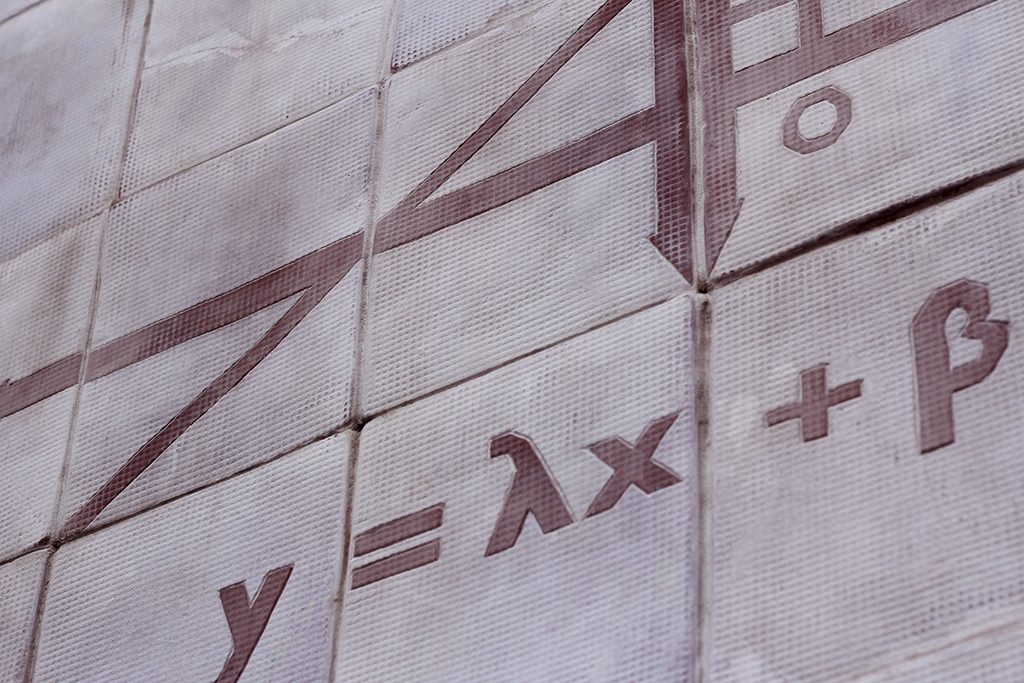haiku, 2014
Experimental School of the University of Athens, Greece
In the frame of The Memory Room of our Identity: Our Museums (2013-2015)
72 ceramic tiles
130 x 330 cm
The mural entitled haiku represents equations or, in other words, the forms that the straight line can assume in Analytic Geometry. This title, haiku—from the homonym short Japanese form of poetry that was developed in the 16th century—was given because equations simulate ideograms whose interpretation is approached through the universal language of Mathematics rendering lingual mediation unnecessary.
Mathematics consists of a connecting language code, a lingua universalis in the multicultural composition of a group of students who come from at least four different national origins. Moreover, Mathematics consists of a long-term love on a personal level just as fervently I fell in love with the tin-glazed azulejos in November 2013 in the sunny provinces of Extremadura and Andalusia. This school trip to Spain apart from the typical educational gain, also gave me a great cultural and creative boost.
Returning to Greece the first impulse I followed was not only to collect information and material for the magic I had encountered but mainly to learn the art of creating azulejos or at least the technique of making ceramic tiles. Drawn by an eagerness to realize something ambitious for my own standards, ignorance, and lack of knowledge transformed every step of the creative process into a dynamic and at times a hard lesson.
The location of the work was chosen before the sketch, that is the school where I studied for 12 whole years, a school that shaped me and offered me space, both literally and metaphorically, for one more life experiment. At the same time, I aspire to this specific artwork that is placed in the yard of a school to imply that there is space and time for what is called Art, anywhere.
Written in 2013, translated from Greek by Dionysia Tzakosta.


